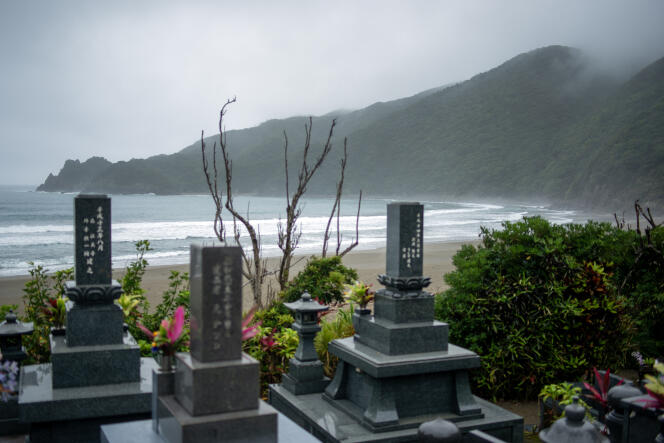


The roar of the waves could be heard in the distance, echoing up to the highlands surrounding the gray-sand beach and its dune covered with pandanus and morning glories. Off the coast of Katoku, with a small hamlet of 19 souls southeast of Amami-Oshima, southern Kagoshima Prefecture, a typical regional typhoon passed through in June. The sea was rough and the wind got increasingly stronger.
A concrete seawall, which may soon extend 180 meters across the beach, was designed to protect the small island from the onslaught of typhoons and prevent erosion from washing away the dune, devastating one of Japan's few unspoiled marine environments.
Project promoters (construction companies, the municipality, and the prefecture) have highlighted the risks to the village and its small cemetery located on the crest of the dune. Some residents, however, have contested the method. According to them, using concrete represents an outdated way of doing things, exemplified by the sad example of the approximately 400 kilometers of seawalls lining the Tohoku coast in northeast Japan following the tsunami of March 11, 2011. A lawsuit is ongoing, and the Fukuoka Court of Appeals deemed the scientific arguments gathered by the project's opponents as admissible on Wednesday, June 28.
"The same mistakes are being repeated. Amami-Oshima's nature continues to be destroyed by unnecessary public works carried out in the name of development," said Hisami Take, a native of the island and official guide involved in the fight against the project.
The seawall project dates back to 2014, when two typhoons caused the erosion of 6,000 square meters of the beach, including 1,700 square meters of private land. The residents were concerned and asked the "authorities to take action." Going with the simplest solution, they opted for a seawall, as is common practice in the archipelago. An initial project foresaw the seawall's length to be 530 meters long. In response to the subsequent outcry, the plan for the wall was reduced to 180 meters, with a budget of 350 million yen (about €2.2 million).
However, the seawall is a source of confusion, as scientific analyses by Tokyo's Kaigan Research Center and Edward Atkin, oceanographer and coastal zone specialist, show that "Katoku beach functions well naturally, with enough sand that can be swept offshore during extreme waves, allowing them to break naturally, then build up again during periods of calm seas."
The project also threatens an outstanding natural site, home to shrimp and crab species listed in the Kagoshima Prefectural Red Book of Threatened Species. Katoku is also a nesting site for endangered leatherback and loggerhead turtles.
You have 63.07% of this article left to read. The rest is for subscribers only.
